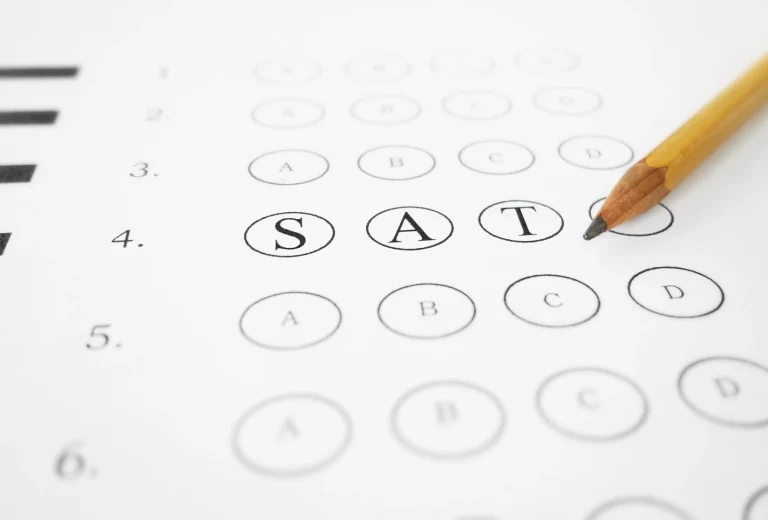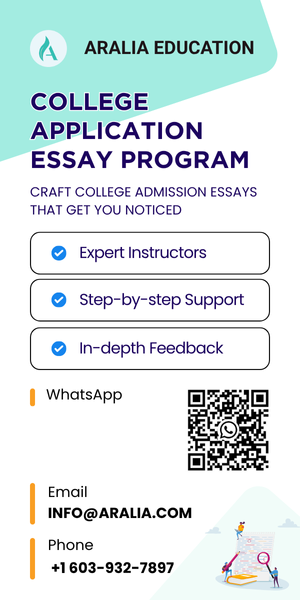What do you need to know before investing?
1. Basic understanding of personal finance
Before going into potential investments students can make, we want to emphasize that the key to financial freedom and success is a good long-term financial plan. A long-term financial plan includes a budget for saving and investing, as soon as you’ve paid off any debts. We have written a detailed guide to personal finance and explained financial terms such as credit/debit to help navigate students through this new world. No one is born with financial talent and knowing how to save or invest. To become financially successful, students need to know the basics.
2. Have a financial plan
The second step is to have a financial plan. A financial plan doesn’t have to be all formal but should highlight your goal of investing and saving. Some people want to save for a car, for future emergencies, or for higher education. Depending on your short-term and long-term goals, you should write down:
| What do you want to save or invest for? | When do you want to achieve the goal? |
| A | 5 Years |
| B | 2 months |
| C | 1 months |
| D | 2 weeks |
In addition to your goals, you should consider your current financial situation. Since you’re a high school student, you may not have a lot of financial burdens that have to be taken care of, nor many assets in the form of cash, savings, investments, or personal property. When creating a financial plan, you should consider both your goals and your assets and liabilities – your financial situation at the moment.
3. You are still a minor
Since you’re in high school, there are certain limitations about what you can and can’t do:
- You can own stocks under your name, but you can’t open a brokerage account
- You can have a custodial account (financial account set up by a legal guardian for the student) and a Roth IRA (individual retirement account)
A custodial account is created for the benefit of both students and parents/guardians, to make sure that students can make the right decisions with their guardian’s help. The stocks held in this account are in the minor’s name, but the legal guardian will conduct transactions on their behalf.
Now that you got all the basics covered, let’s get started and discover how you can invest! Every investment involves risk, so it’s important to be aware and understand that you may be losing some or all of your investment. Therefore, depending on your risk tolerance, you can choose whether you want to be more conservative with the investments, or you want to do a riskier investment. Savings in the form a bank account, CD, or government bonds does not have risk, but over time the returns on the money are lower.
Savings and Investments for High School Students
1. Roth IRA and Index Funds
If you have a part-time job or you have been saving up, you should open a Roth IRA account. A Roth IRA is a retirement account and you will put after-tax income into this account. Ideally, you want to let the investment compound for many years and withdraw the money during retirement tax-free. While there is a Roth IRA maximum contribution amount (up to $6,000 for 2022), there is no minimum that students have to contribute to Roth IRA. You can also choose a Roth IRA where you can manage the investments on your own, or let it be managed by an automatic system. Since a Roth IRA is just an account, students can open this account if they have earned income that is below the specified adjusted gross income limit.
You can use the funds in the Roth IRA to invest in stocks, bonds, or cash (money market funds). A popular option for a Roth IRA is to invest in an index mutual fund. An index mutual fund is a fund that invests in multiple companies, managed by an individual or an investment company. The difference between an index fund and regular stock is that stock is an investment in only a single company, which has a large amount of risk. Whereas an index fund has stocks from multiple companies making up the index and normally moves with the market. Since the market theoretically will go up over time, you will eventually receive a return on your investment. However, this may not hold true depending on the fund you choose. Roth IRA accounts are available from investment firms like Vanguard, Fidelity, or Betterment.
2. High Yield Savings Account (HYSA)
A high-yield savings account is the same as a regular savings account, but you get paid a much higher yield on your money. For example, many traditional banks like Bank of America, Chase, or Citizens Bank have near-zero Annual Percentage Yields, but the HYSA account can provide an amount that is significantly higher. With a higher interest rate, your money put into this saving account will accumulate and grow bigger over the long term. High Yield Savings Accounts are available from banks like Ally Bank, Capital One, or Synchrony Bank, and many others.
3. High Yield Certificate of Deposit (CD)
A high-yield certificate of deposit or CD is an offering from a bank, similar to a savings account, but you must hold the initial deposit in the CD for a certain amount of time until it matures. The time period can range from 3 or 6 months on the shorter side to 12, 18, 24, or more months on the longer side. If you remove money from a CD before it matures, you need to pay a penalty of a certain number of months of interest, so it does not make sense to invest in a CD if you have a short-term savings goal. Some banks do offer a product called a no-penalty CD where you can take out your money before the CD matures with no penalty. However, the downside is that the interest rate is lower than a High Yield CD. Similar to High Yield Savings Accounts, High Yield CDs are available from banks like Ally Bank, Capital One, or Synchrony Bank and many others.
4. Bonds
In addition to investing in stocks, students have the option to invest in bonds. Investing in stock means that you buy a portion of the company; however, you may gain or lose money depending on whether the value of the company increases or drops. Bonds can be understood as, using a simple example, if you buy a bond, the company will pay you back your initial investment in a certain number of years, plus interest twice a year at the rate of, for example, 5% a year. Depending on your risk tolerance, you may go with stock if you think the company will do well in the future, leading to an increase in stock price; however, the situation can always go the other way. You may instead go with a bond, which is a more stable option, but if the company goes bankrupt, your money will be gone. Generally, small investors like high school students do not directly purchase individual bonds but will instead purchase bond mutual funds from companies like Vanguard or Fidelity in their Roth IRA account or a custodial account set up with their parents/guardians.
Another option for high school investors is purchasing US Savings Bonds. US Savings Bonds are now purchased through Treasury Direct and managed through an online account. There are two series of Savings Bonds, Series I bonds and Series EE bonds. Series I bonds are to protect your savings against inflation and have two interest rates, a fixed rate that is the same for the life of the bond and a variable inflation rate that changes twice a year and is based on the Consumer Price Index. Series I bonds provide good interest rates, generally higher than a High Yield Savings Account, but do have some limitations for the high school investor. 1. They can only be cashed out after holding them for 1 year, so your savings goal needs to be greater than 1 year. 2. If you cash them out prior to holding them for 5 years, you lose the previous 3 months of interest.
Series EE bonds earn a fixed interest rate for 30 years (and then no longer earn interest), but are currently guaranteed to double from the initial value in 20 years. Series EE bonds currently have a much lower fixed interest rate than High Yield Savings accounts but have a good interest rate of approximately 3.5% over 20 years at the time when they double after holding them for 20 years. Since the Series EE bonds take such a long time to double and have a low fixed interest rate, for a high school investor these might not be the best investment.
5. Stocks, Mutual Funds, and Exchange Traded Funds / ETFs (in a custodial account, outside a Roth IRA)
If you contributed the maximum to your Roth IRA (good on you as a high school student!) or have a shorter term goal for investing rather than retirement, consider opening a custodial investment account with your parents/guardians in order to invest.
Under a custodial account, students can hold stock, mutual funds, or Exchange Traded Funds (ETFs). Stocks are securities that represent a portion of ownership of an organization. With the ownership of stocks, people can claim part of the company’s earnings and assets. For a simple example, if a company has 100 shares of stocks for the public, and you own 10 shares, that means you have a claim to 10% of the company’s assets and earnings. Owning stocks means that you can receive dividends (dividends are portion of the company’s profit distributed to shareholders with Profit = Revenue – Cost). There are two types of stock: Common and Preferred Stock. Common stock allows you as the shareholder to vote at the shareholder’s meeting and receive dividends. Preferred Stock usually does not give the investor voting rights, but provides a higher claim on assets and earnings. Therefore, in the case of bankruptcy, preferred stockholders will receive payouts before common stockholders.
Mutual funds and Exchange Traded Funds (ETFs) are funds created by finance professionals that will manage the fund either actively or passively. A passively managed fund follows an existing index like the S&P 500 or the Bloomberg Aggregate Bond Index and generally has less fees to the investor. An actively managed fund is where the portfolio manager does not follow an existing index and makes trades trying to achieve higher than market returns. The fees for an actively managed fund are generally higher as compared to a passively managed fund. For a high school investor just getting started, it is better to focus on investments in passively managed funds.
Mutual funds and Exchange Traded Funds (ETFs) share some similarities, as both are less risky than investing in individual stocks and bonds – your money will be divided by funds and invested into many different stocks or bonds. One fund can have hundreds or thousands of individual stocks or bonds, so you won’t put all the eggs in one basket. Both mutual funds and ETFs gives you access to a variety of investment options depending on your preference: funds following an index, 50/50 domestic/international stocks, high dividend stock funds, sector-specific funds, etc.). The difference between the mutual funds and ETFs funds lies in the buying power. Since ETFs are listed on the market and assigned a symbol (a combination of a few letters to represent the fund) you can make trades throughout the day, while mutual funds only trade once a day, at the end of the trading day.
Saving or investing, it’s totally up to you! As we mentioned above, no one is born knowing how to save or invest. By having a strong foundation of investment knowledge from the beginning, you set yourself up for future success. You may think it is too early for you to learn the concepts about money and investing. However, if you are going to take a loan for college, money-saving, investing, and spending should be one of your priorities. Good luck investing and we wish you the best!









